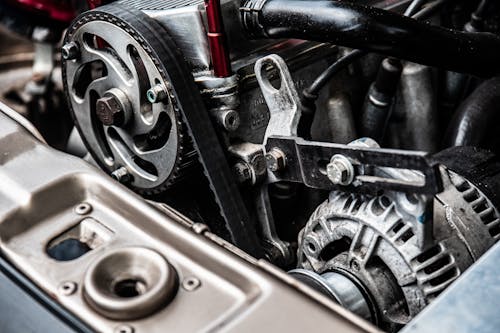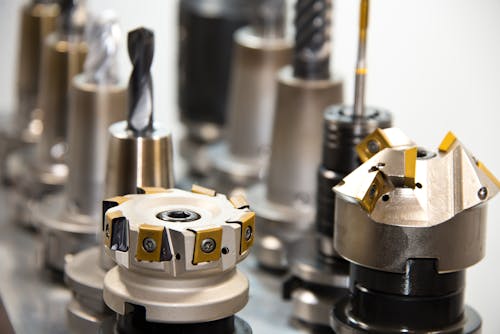In order to give the parts their required shape, this method involves pouring molten aluminum under intense pressure into a die cavity. The procedure, advantages, applications, and industry standards for aluminum high-pressure die casting will all be covered in this article.
Why Is the Aluminum Alloy Used in Die Casting?
Aluminum is the most popular metal in die-casting production. Aluminum is the preferred metal for almost every kind of die-cast goods due to its affordability and strong corrosion resistance.

The use of aluminum alloys in die casting is preferred for a number of additional reasons. Aluminum is firstly simple to cast. It has a low melting point, and is ductile, soft, light, and well-suited for machining. These characteristics make pouring molten aluminum into a mold quite simple. Aluminum is also affordable and easily accessible, with great recyclable properties.
Aluminum High-Pressure Die Casting Process
Aluminum high-pressure die casting is a multi-stage process. These stages consist of:
Designing the mold: The process begins with designing the mold that will be used to produce the parts. This involves creating a 3D model of the part via computer-aided design (CAD) software.
Creating the mold: A mold is created with steel or other robust materials after the design is finished. After that, this mold is attached to the high-pressure die-casting machine.
Metal preparation: The molten aluminum must now be ready for casting in the following phase. All impurities are taken away from the aluminum by heating it to the point of melting.
Metal injection: When the metal is prepared, it is pumped into the mold cavity at high pressure. The pressure is kept up until the metal completely fills the space and solidifies.
Ejection and cooling: The mold is opened and the part is ejected when the metal has solidified. The extra material is then cut off and the item is cooled.
Advantages of Aluminum High-Pressure Die Casting
Aluminum high-pressure die casting has a number of advantages over conventional manufacturing techniques, including:
Simple for Mass Production: The best option for high-volume production is die casting. When producing multiple identical parts in a batch, the procedure saves time. This means that it will only take a few weeks to go from prototype to mass production!

Precision and stability of dimensions: The components produced with the die-casting method have exceptionally tight tolerances and accuracy. They can withstand heat and are strong.
Outstanding Surface Finish: Die casting enables an exceptional surface finish to be achieved during the die-casting process itself, where the surface RA value may vary from 2-100 m (0.5-2.5 in). It decreases and, in some cases, even eliminates the necessity for machining processes for surface polishing.
Die castings with high mechanical properties: Die casting is famous for having exceptionally strong mechanical characteristics. In the die-casting process, the metal melts quickly, cools, and crystallizes into a tight structure. It also means that both hardness and strength are extreme, as you might expect. This occurs because the disorder cannot easily spread through crystals when they form under pressure.
Die Castings may contain components made of different materials: At the die-casting stage, intricate fasteners or inserts can be added, providing a number of advantages, including a reduction in material and production costs. Unique shapes with different parts can be created rather than built from scratch, and durability can also be improved. As a result, assembling procedures are also made simpler.
Corrosion-free and weatherproof: Weather, typical air gases, and liquids are all resistant to cast aluminum.
Outstanding Machinability: The exceptional machinability of aluminum castings is just one of the many advantages of using them in manufacturing.
Lightweight and Thin Wall Thickness: Die casting serves as one of the most efficient methods for producing a thin but robust product. It allows us to manufacture products with thin walls of up to 1mm, resulting in lighter products without compromising precision or strength. resulting in cost savings as well.
What are the disadvantages of High-Pressure Die Casting?
High-pressure die casting has a lot of capital expenses, which is a major drawback. In comparison to other casting techniques, die-casting machines require additional machinery, including furnaces, automated arms, die tools, and related accessories, which are extremely costly. Therefore, a high production volume is necessary for high-pressure die casting to be a financially viable technique.
High-pressure die casting also has extra disadvantages, including:
Expensive Investment: High-pressure die casting is often considered an expensive production techniqueBecause the initial expenses of the tooling are typically greater for this process, its capacity to consistently create lengthy continuous runs of needed components or goods not only generates higher initial sales but also enables unit costs to be reduced despite higher volumes.
Porosity: Unfortunately, pieces with pores are common in high-pressure die casting. This leaves them porous, which is a drawback when working with them in heat-treating operations because the resulting product is vulnerable to surface blisters due to air entrapment in these pores. Naturally, there are a number of ways to avoid this, depending on the user’s needs, as these specialized processes to achieve zero porosity can raise the original investment cost. Vacuum-aided die casting is one such method.
Not Appropriate for Small Batch Manufacturing: Large volumes are typically ideal for the die-casting process. Due to the high tooling cost, the die-casting process is unlikely to be economical if you only need to create a few products.
Applications of Aluminum High-Pressure Die Casting
The following sectors use aluminum high-pressure die casting:
Automotive: This method is used to make components for combustion engines, transmissions, and different automobile components.
Aerospace: Aluminum is a lightweight material that is perfect for making components for aircraft and spacecraft.
Electronics: High-pressure aluminum die casting is used to make components for mobile devices, including tablets, laptops, and smartphones.
Aluminum High-Pressure Die Casting Industry Standards
- ASTM B85: The requirements for aluminum alloy die castings are described in this standard.
- NADCA 207:The specifications for designing high-pressure die casting parts are provided in this standard.
- ISO 9001: In accordance with this standard, manufacturing facilities must implement quality management systems.
Conclusion
High-pressure die casting of aluminum is a challenging process used to produce precise, accurate pieces with intricate shapes and designs. The benefits of this method include quick manufacturing rates, cheap parts, and the ability to make parts for a variety of sectors.








